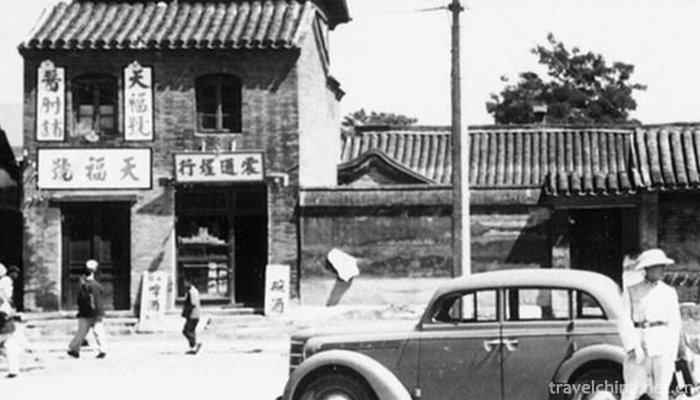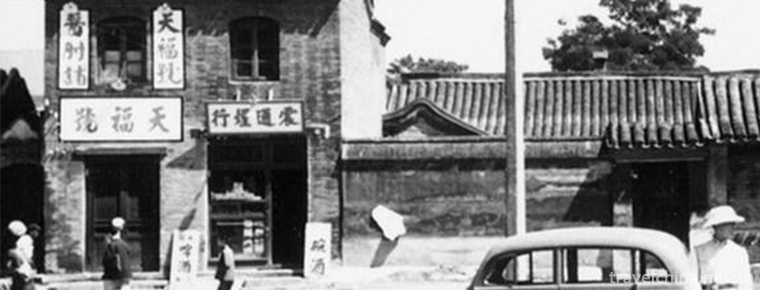Manufacturing Techniques of Tianfu Sauce Elbow
Manufacturing Techniques of Tianfu Sauce Elbow
Declaration area or unit: Beijing Tianfu Food Co., Ltd.
Tianfu Sauce Meat Shop was founded in 1738, the third year of Qianlong in Qing Dynasty, when Shandong was in a severe drought and there was no grain harvest. Liu Fengxiang, a man from Yexian County, Shandong Province, led his grandson Liu Daiming to Beijing to make a living. He opened a Sauce Meat Shop in the northeastern corner of Xidan Archway, named Tianfu, which implied the meaning of heaven's blessing. The sauce elbow made by Tianfu is crisp and delicious with excellent quality, which attracts the patronage from top officials and nobles to bottom civilians. Empress Dowager Cixi also greatly appreciated it after tasting, and gave "Tianfu waist plate", which stipulated that Tianfu waist plate should be used to send sauce elbows into the palace quantitatively every day. Since then, "Tianfu sauce elbow" has become a tribute, and its reputation has been boosted. In 1993, "Tianfu" was named "the old Chinese brand". So far, Tianfu has been passed down for eight generations. During the historical changes of more than 270 years, its products such as soy sauce elbow have always maintained superb quality.
Tianfu sauce elbow production technology is formed by repeated research of Liu's ancestors and grandchildren in their business. Its sauce preparation method is unique and unique. Tianfu sauce elbow has fine material selection, fat but not greasy, thin but not wood, non-return skin, rich fragrance and mellow. Since the 21st century, due to the overburdened old enterprises, shortage of funds and talents, narrow production sites, aging of skilled workers, outflow of skilled personnel and other reasons, the inheritance of Tianfu sauce elbow production technology has become increasingly difficult, followed by few people. To change this situation, effective protection measures must be formulated as soon as possible.


-
2.Ancient town of Shaxi
Shaxi is located in the southeast of Jianchuan in Dali, Yunnan Province, China
Time 2018-10-17 -
3.Qianfoya Scenic Spot
Guangyuan Qianfoya is the largest grotto group in Sichuan Province. The statues of cliffs began in the Northern Wei Dynasty. After nearly 1500 years, the cliffs, which are 45 meters high and 200 meter
Time 2018-12-26 -
4.Iron Coal Steam Locomotive Museum
Tiaobingshan Steam Locomotive Museum, formerly known as Iron Coal Steam Locomotive Museum. National AAAA-level scenic spots and national industrial tourism demonstration sites
Time 2019-02-22 -
5.Landscape Architecture in Yangzhou
Yangzhou gardens began in the Western Han Dynasty, flourished in the Sui and Tang Dynasties, matured in the Song and Ming Dynasties, and flourished in the Qianlong Period of the Qing Dynasty.
Time 2019-04-21 -
6.Jianchuan Opera
Jianchuan Baiqu is an ancient music variety with a long history and wide spread in Bai nationality area. It is mainly popular in Jianchuan, Eryuan and Tongdian, Jinding and Jiuhe of Lanping County, Nu
Time 2019-05-05 -
7.Gong and Drum Art
Gong and drum art can be roughly divided into Yunsheng Gong and drum, Zhongzhou big drum, Ezhou brand gong, Xiaohe Gong and drum, Hanggu flying gong, Changshan battle drum, Taiyuan Gong and drum, Liji
Time 2019-05-15 -
8.Henan Opera
Henan Opera, originating in the Central Plains (Henan), is one of the five major Chinese operas and the largest local opera in China. Contemporary Henan Opera has followed Henan Satellite TV, Henan He
Time 2019-07-16 -
9.Sichuan University of Arts and Science
Sichuan Academy of Arts and Sciences, located in Dazhou City, Eastern Sichuan Province, has a history of running higher education which can be traced back to Longshan Academy in late Qing Dynasty, whi
Time 2019-08-31 -
10.Chongzhou Confucian Temple
One of the four best preserved Confucian temples in Sichuan Province. National key cultural relics protection units. Confucius Cultural Center in Western China. It is located in the south of Chongzhou painting pool.
Time 2020-11-05 -
11.Deyang science and technology
In 2018, Deyang City won 141 provincial projects, including 108 provincial science and technology plan projects and 33 Provincial Intellectual property projects. There are 32 provincial patent implementation projects. 184 high-tech enterprises. A total of
Time 2020-12-14 -
12.Neijiang scenic spot
Daqianyuan scenic spot is located in Yuanding mountain, Dongtong Road, Neijiang City, Sichuan Province. It integrates Zhang Daqian memorial hall, Zhang Daqian Museum, Zhang Daqian Art Museum, Zhang Daqian's former residence, Xilin temple, Lulan cave cliff tombs,
Time 2020-12-16